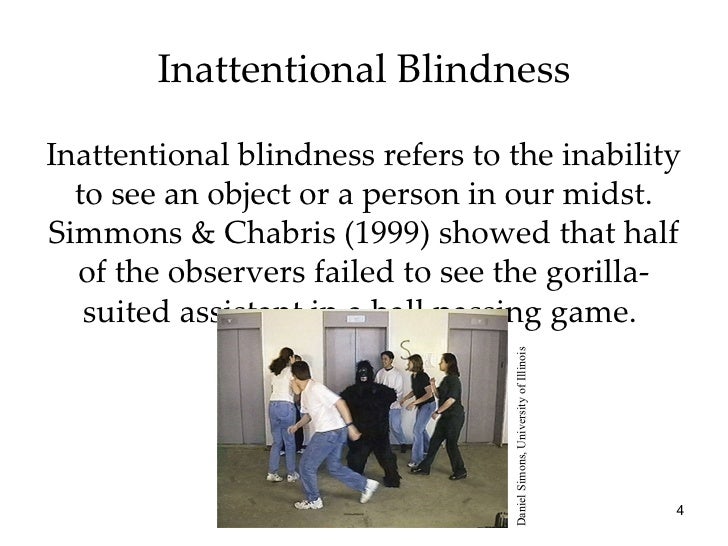People frequently not noticing massive changes is an example of change blindness or inattention blindness it s a result of info overload so the brain doesn t fully process information

People frequently not noticing massive changes is an example of change blindness or inattention blindness

When it comes to perceiving our surroundings, our brains have an incredible capacity for processing vast amounts of information. However, there are limits to this processing power, especially when faced with an overload of information. This phenomenon, known as change blindness or inattention blindness, can result in people frequently not noticing massive changes in their environment.
To understand change blindness, we need to first delve into the concept of inattentional blindness. Inattentional blindness refers to the failure to notice unexpected stimuli in one’s environment, even when it is clearly visible. If our attention is focused on a particular task or stimulus, we may become blind to other relevant information that is not within our conscious focus.
Take, for example, the famous “Gorilla in the Midst” experiment conducted by psychologists Christopher Chabris and Daniel Simons. In this experiment, participants were asked to watch a video and count the number of passes made by a group of basketball players. During the video, a person dressed in a gorilla costume walked through the scene, yet roughly half of the participants failed to notice the gorilla. This demonstrates how our attention can be so narrowly focused that we overlook significant changes in our visual field.

Change blindness takes inattentional blindness a step further. It occurs when individuals fail to notice changes that are made to a visual scene, even when those changes are large and obvious. In other words, our brain does not fully process the new information, resulting in a failure to perceive the change.
One possible explanation for change blindness is the limited capacity of our attentional resources. Throughout our daily lives, we are bombarded with a constant stream of sensory input, from visual stimuli to auditory cues. Our brain must prioritize what information to process and what to ignore. When confronted with an excessive amount of information, our brain may selectively filter out certain stimuli, leading to a failure to notice changes.
Moreover, our brain relies on a range of heuristics and mental shortcuts to simplify the complex task of processing information. These heuristics allow the brain to make quick judgments and decisions, but they can also contribute to change blindness. Our brain may automatically fill in missing details or make assumptions about our environment, which can prevent us from perceiving significant changes.
Change blindness is not limited to visual stimuli. It can also occur in other sensory modalities, such as hearing and touch. For instance, our brain may tune out certain sounds or vibrations when we are focused on a specific task or conversation, leading us to miss important changes or cues in our surroundings.
In conclusion, change blindness or inattention blindness is a fascinating phenomenon that highlights the limitations of our attentional resources. The overload of information can cause our brain to prioritize certain stimuli while ignoring others, leading to a failure to notice massive changes in our environment. Understanding this phenomenon can help us become more aware of the potential limitations of our perception and improve our ability to notice important changes in our surroundings.
Source: Wikipedia - Inattentional Blindness
Tags
Share
Related Posts
Quick Links
Legal Stuff

